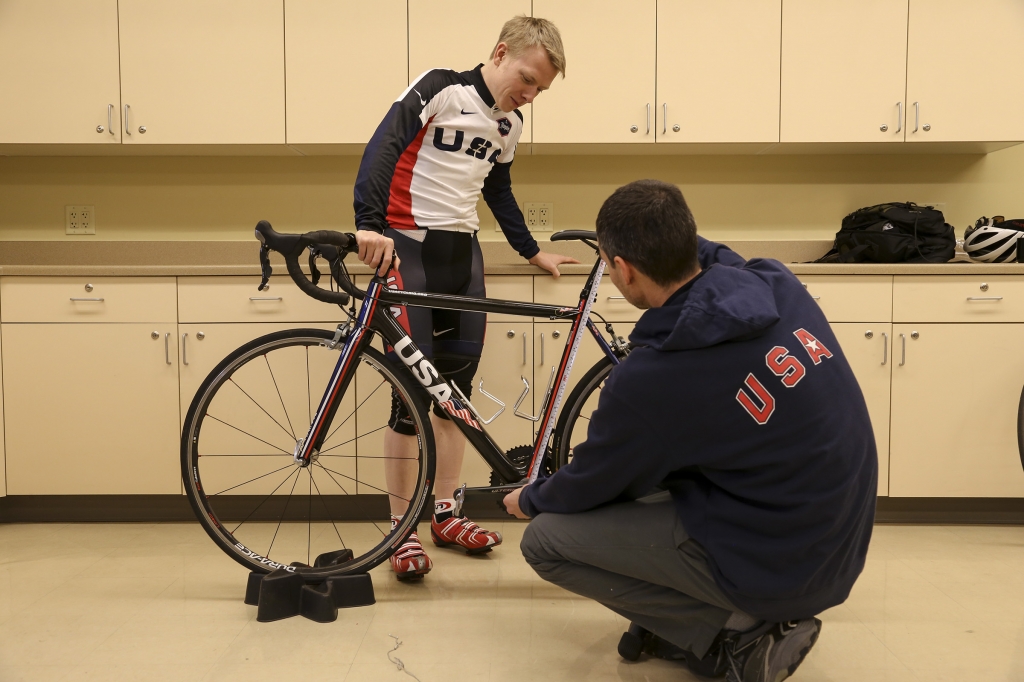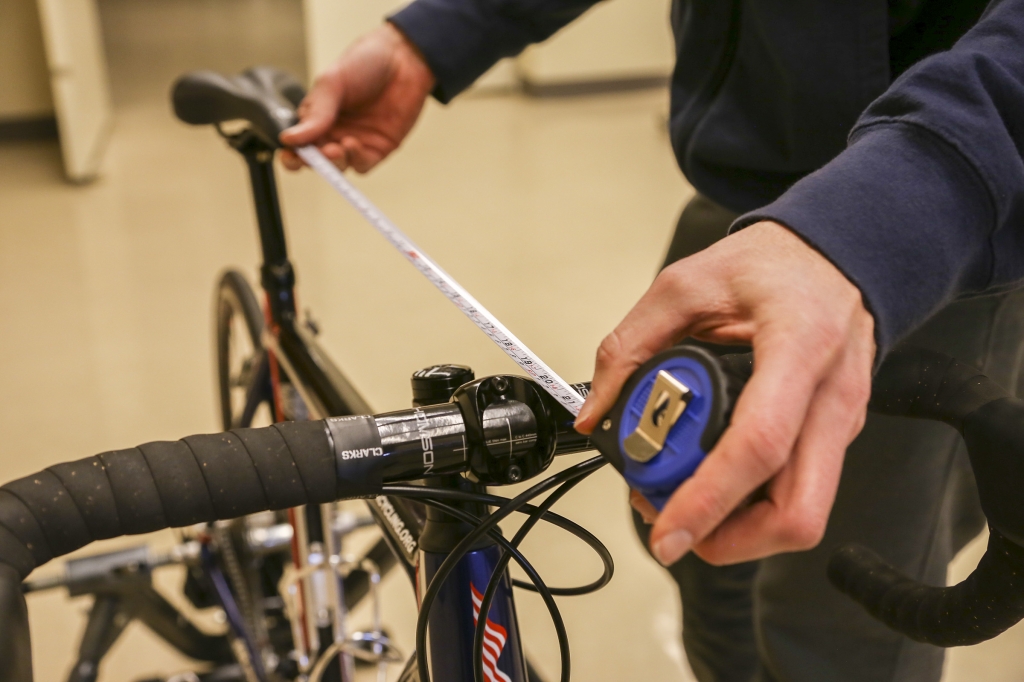| |
Pro Bike Fit Leads To Increased Comfort, Power Gains
 by Robert Annis by Robert Annis
Many racers will spend thousands of dollars on a lighter or more aero bike. But how many are willing to spend a lot less for what could potentially lead to more significant time or power gains?
Jonathan Juillerat has been fitting riders for more than 20 years. He runs the Bluegrass Bicycling Company with his wife Tania out of their Brownsburg, Ind., home, and is renowned as one of the best bike-fit experts in the Midwest. He says a proper bike fit may be the best dollar-for-dollar way to increase your performance on the bike.
Juillerat says he makes “substantial” changes on most of the bikes he fits. While most of his clientele are enthusiast or casual riders, he has fit many racers over the years. Many of the competitive riders mistakenly set their bikes up in ways they believe will maximize their power or aero profile, but instead result in pain in the knees, back, neck, feet and elsewhere.
“Usually it’s a half-dozen or dozen smaller things,” Juillerat said. “The seat might be too high, the saddle angled in a bad way. The rider might be too stretched out and need a shorter stem or the saddle pushed forward more. All of these little things add up and cause various aches and pains that limit your comfort on the bike (and saps your power). … Your body type is ultimately going to determine how we fit your bike.”
Before making an appointment with a fitter, ask around your local cycling community about their experiences. After making an appointment from your preferred candidate, find out what you’ll be paying for. Expect to spend at least two hours for your initial fitting.
 Over the years Indianapolis racer and USA Cycling official Tim Wozniak has undergone six different fits for various bikes. In his experience, the best fitters do a pre-fit interview to understand his riding style, injury history and what he hopes to get out of the fit. From there, the fitters took measurements of both he and his bike and assessed his flexibility. Afterward, they set the bike up on a specially designed trainer, where they observed his riding style and took additional measurements. Over the years Indianapolis racer and USA Cycling official Tim Wozniak has undergone six different fits for various bikes. In his experience, the best fitters do a pre-fit interview to understand his riding style, injury history and what he hopes to get out of the fit. From there, the fitters took measurements of both he and his bike and assessed his flexibility. Afterward, they set the bike up on a specially designed trainer, where they observed his riding style and took additional measurements.
“As I learned more about fitting over the years, I have been impressed by how complex a process it is to connect the bike to the body, including subtle changes after an injury,” Wozniak said. “My first impression, even after doing some reading on the Internet, was ‘why should it take this long?’ As we got into the process, I appreciated the personalized fitting and goal of (getting things perfect). … Each fitter I’ve worked with has their unique talents and knowledge to fit for a specific aspect or discipline within cycling. For the first set of fittings, I noticed the changes right away, such as the elimination of neck and upper back pain, or improved comfort and performance on the bike. Knowing how subtle the changes were, I was amazed at the large, noticeable differences.”
Many fit studios have gone high-tech with their fittings, using the Retül 3D computer-imaging system that allows the rider to keep pedaling throughout the process (instead of stopping at different points while the fitter takes another measurement).
“The body engaged in motion is completely different than when the rider stops and attempts to stay in the same position for a measurement,” claims California-based coach Bruce Hendler, adding he believes this allows a quicker and more accurate fit. Wozniak said a 3D fit from Ball State University’s Human Performance Laboratory detected a wobble in his hip motion (it should have been flat and not moving up and down), as well as an over-extension of his left leg during the downstroke of his pedaling. Based on the data, fitter Jeff Frame added cleat wedges to Wozniak’s shoes, as well as a lift spacer between the shoe and cleat on his left foot. Those simple additions eliminated Wozniak’s previously undiagnosed problems, not only resulting in a smoother pedaling motion, but also a 20-watt power increase.
Expect to pay at least $200 for a professional fit. Look for a shop or studio that offers lifetime fits and adjustments. If you switch out equipment (say a new bar or perhaps a new type of shoe), are coming back from an injury or just feel you need a little tweak, it’s always worthwhile to check in with your fitter. It can take up to six months or more to dial in the perfect fit, Juillerat claims, although you should be able to notice significant improvements after the first session.
“It’s amazing what your body can do when you’re not devoting so much mental energy fighting discomfort,” Juillerat said.

| |